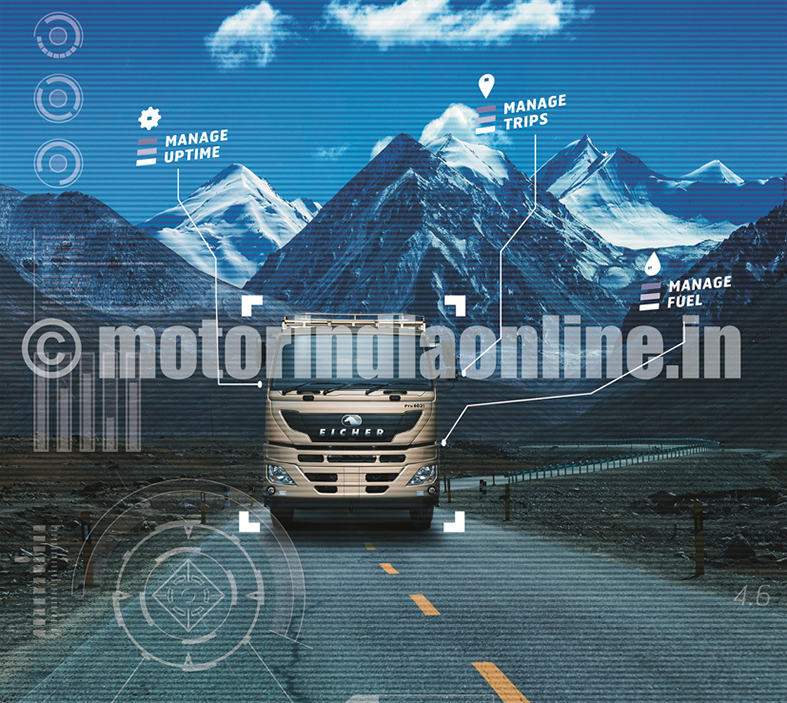Advanced Telematics and Fleet Management Systems (FMS) can transform the operational processes of trucking and enable fleet managers to better engage with drivers for greater good, towards efficiency and sustainability.
“Connectivity” with capital ‘C’ has become very popular among automotive and trucking industry circles. It is perhaps a new language that the industry is trying to speak, much to its boredom. It is disruptive and also threatens to shake the very core of the industry if not embraced otherwise!
Trucking is no more a simple process of moving a cargo from point A to point B as it was historically. Too many externalities matter now, too many players holding up the value chain, and too many norms and regulations the industry has to adhere to. Plus, market competition is pushing the industry further in pursuit of efficiency, safety and transparency in the way business is carried out, for which the connected technologies are providing appropriate platforms at each and every level.
Who is to blame for this disruptive shift towards connectivity? Your cellphones are mini-computers now, which can perform lots of stuffs more than what they are supposed to do; most home appliances and gadgets are getting ‘smarter’ with new features; supremacy of the internet is over everything. So how can you expect your trucks to stay as trucks forever? They are already smart gizmos now that the extent of electronics on board is simply hard to believe. Connectivity is an overarching megatrend of this century. The trucking industry alone can never stay aloof. It has to be embraced in one way or the other.
Connected technologies are fast transforming the trucking landscape at two levels globally. One at the more advanced level, by making the trucks drive autonomously and connectedly in a convoy by sharing real time driving data with each other.
Almost all global OEMs and tech suppliers are into the making of autonomous systems that can take over trucking from drivers for greater efficiency and safety. The second strand of ‘connectivity’ refashioning is happening at the more pragmatic levels of trucking – the advent of telematics and fleet management systems (FMS) using big data generated at multiple sources on-board the trucks. This has completely changed the way operators and fleet managers deal with various aspects of their business, starting from tracking the vehicle, optimized routing and load location to reckoning the health of the vehicle and maintenance scheduling. Almost every major OEM is offering built-in telematics, but there are numerous aftermarket or standalone kit and software for telematics and FMS.
Where does India stand in ‘Telematics’?
If you think that the Indian trucking industry is too savage for utilizing telematics, you are absolutely wrong! The fact is that India is one of the fastest emerging markets for telematics, with the installations in CVs expected to grow from 2.4 per cent of vehicles parc in 2016 to 9.3 per cent in 2023, according to Frost and Sullivan.
Although the adoption rates are not high as in Western markets, the challenges posed by increasing operational costs and competition, higher pilferage and theft rates, and safety issues are bringing in more awareness among fleet operators in this regard. They are looking at various measures through which efficiency and value-addition can be achieved in their operations. Yet, the structural make-up of the domestic industry with numerous unorganized and small players and additional costs for services limits the telematics and FMS adoption.
Although a huge chunk of trucks in India feature the telematics system, most of them are very basic and are largely limited to vehicle tracking through GPS and navigation. In other words, operational processes like freight handling, truck-depot management, vehicle utilization and maintenance, driver training, fuel efficiency, etc., are still ‘primitive’ and largely unchanged, unlike in the developed West. Advanced telematics and use of data from telematics are still at a very nascent stage of development in India, even among large fleets and logistics operators.
New opportunities
Considering the expansive use of electronics and on-board computers, the modern trucks are rolling gold mines of data, collecting information from their own flesh and bones, observing driving behaviors and environment, and gathering data from any devices connected to it. These telematics data can be of great help in analyzing how efficient the trucks are actually running and being utilized – something that is fundamental to the trucking business.
For instance, let’s consider the wonted habit of engine idling among truckers in India. An efficient telematics system can generate valuable data on engine idle time, to say whether it is under acceptable levels or not. This data can be used to create awareness among drivers, and the system can also facilitate effective two-way communication with drivers. Apply the same approach to all those driving phenomena that fall under the purview of ‘Driver Behaviour’, including harsh braking, aggressive acceleration and gearing, clutch driving, etc. The delivered gains would be enhanced fuel savings along with increased safety and vehicle endurance levels.
Taking the telematics to the next level, the video monitoring systems are gaining huge traction in the developed markets. Typically forward facing ‘bolt-on’ cameras, like dash cams used in cars, are integrated with the on-board telematics and FMS to deliver an objective and clear picture of how the truck performs on road. Such a connected database can provide valuable insights on driver’s risks and help fleets conduct proactive assessment to coach out risky driving habits from their fleets.
Telematics can help fleet managers to engage with drivers much better, at times when driver shortages are rampant and driving as a ‘profession’ lacks dignity. Once the freight is loaded and the truck enters the road, drivers are proclaimed responsible for anything that happens on travel. This alienates them from the entire process, resulting in increased work stress and are forced to feel less enthusiastic about the job.
Telematics functionalities can enhance their work satisfaction as they can be backed up against blames that are no fault of their own, thereby protecting their dignity. Their good driving practices can be recognized and rewarded by the fleet owners as well. Moreover, availability of data on performance can act as a motivating factor for the drivers to bring the best out of them.
In a nutshell, the world we live in is soaked in big data generated from a number of sources that are all connected. In the trucking and logistics industry, the scope of data analytics is more pronounced, thanks to the sheer size of its operational chain involving numerous stakeholders and the high volume of business. The ‘connected’ ecosystem is offering tons of opportunities via vehicular telematics and FMS for the haulers to better organize their operational processes and engender efficiency at every level. Advanced telematics is a biggest ‘enabler’ towards sustainability in trucking, also likely to be a ‘game changer’ amid growing competition.
For sure the advanced telematics and FMS is an added investment, especially for small fleets. But there’s no denying that its long-run outcomes are huge. From the cost benefit perspective, the small size of Indian fleets actually make the case even more compelling to invest on these connected technologies as against logistics giants that can source a back-up some way or the other to absorb the cost of primitive fleet management.

